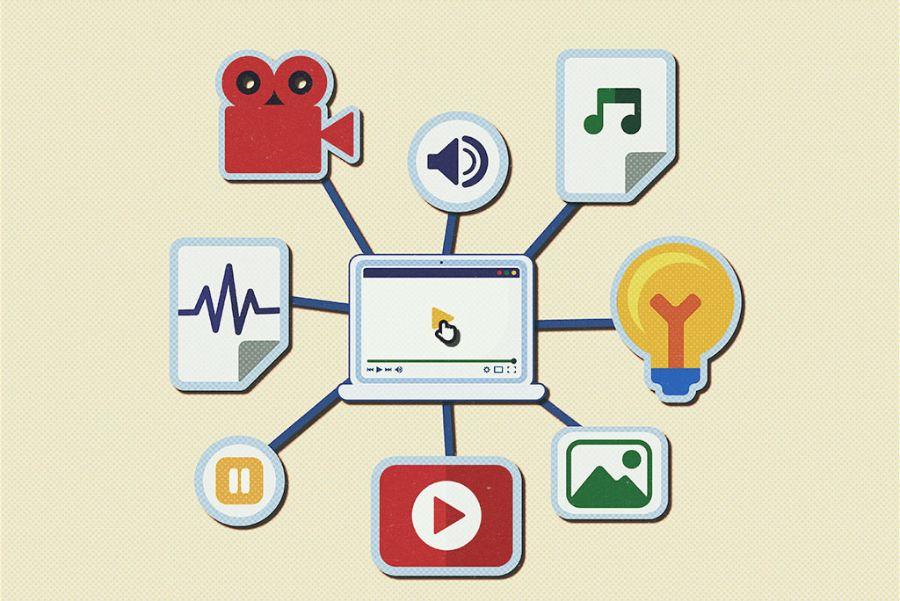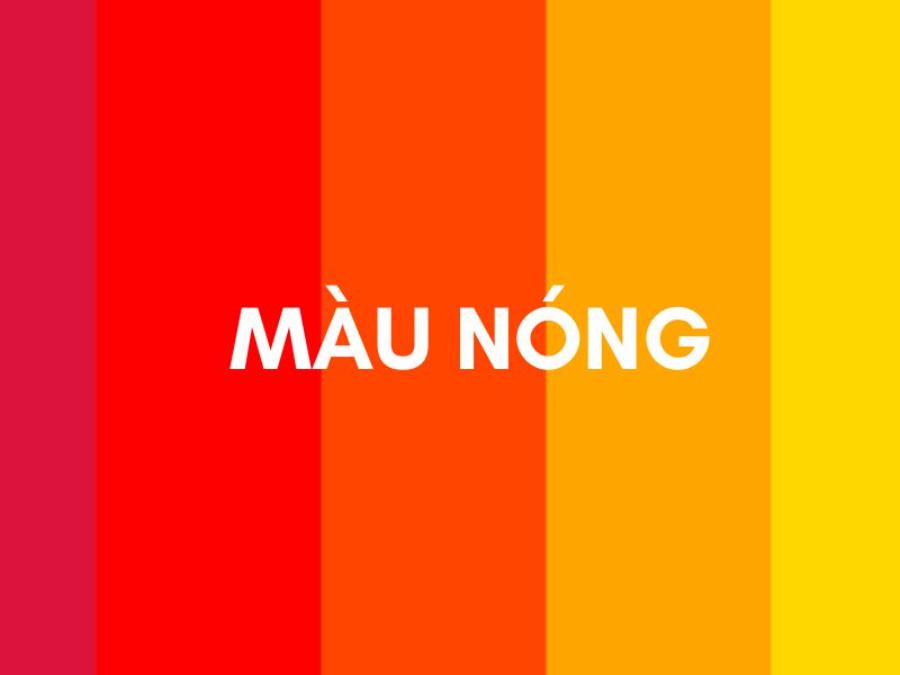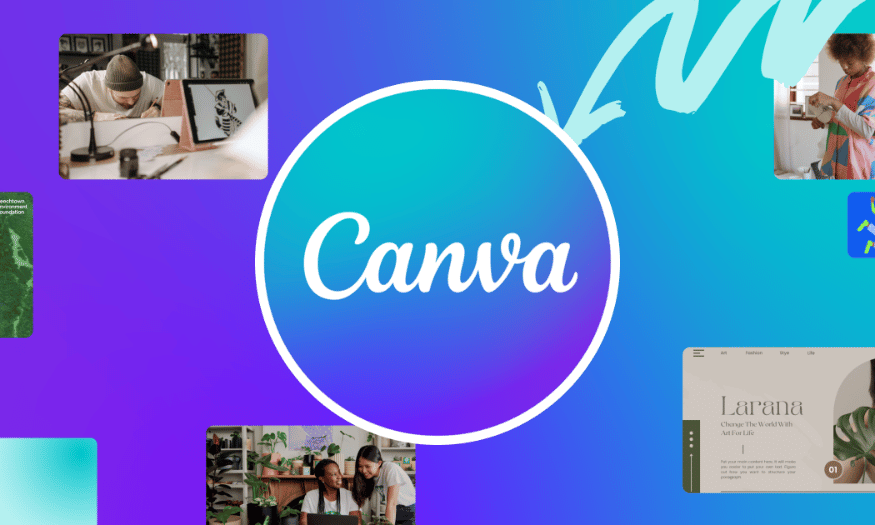Best Selling Products
Multimedia Design: An Effective Brand Storytelling Tool
Nội dung
- 1. Multimedia Marketing: An Indispensable Piece in Brand Strategy
- 1.1. Definition and importance of Multimedia Marketing
- 1.2. The Rise of Multimedia Content in the Digital Landscape
- 1.3 Multimedia Marketing – The combination of art and technology
- 1.4. Outstanding benefits of Multimedia Marketing
- 1.5. Popular Multimedia content formats and applications
- 1.6. Multimedia Marketing and the customer journey: Multi-touch interactions
- 1.7. Challenges and opportunities when implementing Multimedia Marketing
- 2. Design: Visual Foundation and Brand Storytelling Language
- 2.1. The key role of design in building brand identity
- 2.2. Design is more than aesthetics: Function and hidden message
- 2.3. Basic design elements and the power of storytelling
- 2.3.1. Color: Brand color palette and psychological meaning
- 2.3.2. Typography: Font selection and brand personality
- 3. Applying Multimedia Marketing in practice
- 3.1. Internet Explorer's "Child of the 90s" Campaign
- 3.2. Finery's Virtual Reality Experience
- 3.3. PlainJoe Studios Brand Space
- 4. Conclusion
How Multimedia Marketing turns design into a brand storytelling tool, creating immersive customer experiences and increasing engagement in the digital age.

In the digital age, brands need creative and engaging approaches to stand out. Multimedia marketing, with its diverse combination of content formats such as text, images, audio, video and interactivity, has become an indispensable strategy. In this article, sadesign will explore with you the key role of design in multimedia marketing.
1. Multimedia Marketing: An Indispensable Piece in Brand Strategy
Multimedia Marketing is not simply about using multiple media channels. It is also about combining images, sounds, text and interactions to tell a comprehensive brand story. Design in this context is not just an aesthetic element but also a means of conveying the brand’s message, values and identity to customers.
.jpg)
1.1. Definition and importance of Multimedia Marketing
Multimedia marketing is a marketing strategy that uses a combination of different content formats such as text, images, audio, video, animation, and interactive elements to convey a brand message to the target audience. Instead of relying on just one or two traditional formats, multimedia marketing leverages the combined power of multiple media to create a richer and more engaging experience for users.
The importance of multimedia marketing is increasing in the modern context because:
Attention-Grabbing: Rich and visual content is better able to capture and retain user attention than static content.
Increase engagement: Formats like interactive videos, animated infographics, or 360-degree content encourage users to engage and explore your brand further.
Effective Message Conveying: A complex story can be conveyed more easily and vividly through a combination of images, sound and movement.
Reach a diverse audience: Each user tends to prefer a different content format. Multimedia marketing helps brands reach a wider audience across different channels.
Improve SEO: High-quality multimedia content can increase user time on site, reduce bounce rates, and attract backlinks, thereby improving SEO rankings.
Build strong brand recognition: Consistent design across multimedia formats helps reinforce brand image and personality in the minds of customers.
1.2. The Rise of Multimedia Content in the Digital Landscape
The rapid growth of high-speed internet, smart mobile devices and social media platforms has facilitated the rise of multimedia content. Users are increasingly consuming content in a more visual and immersive way. Platforms such as YouTube, Instagram, TikTok and Spotify have demonstrated the power of video, images and audio in attracting billions of users worldwide.
Additionally, multimedia content creation and editing tools are becoming increasingly accessible and user-friendly, allowing businesses of all sizes to create engaging content without investing too much in resources.
1.3 Multimedia Marketing – The combination of art and technology
Multimedia Marketing is not simply the use of multiple media channels, but the blending of images, sounds, text and interactions to tell a comprehensive brand story. Design in this context is not just an aesthetic element but also a means of conveying the brand’s message, values and identity to customers.
Design as a storytelling language
Every design element – from color, typography, layout to imagery – contributes to the brand story. Consistent, intentional design makes it easier for customers to recognize and remember your brand, while creating a deeper emotion and connection.
Create a multi-sensory experience
Multimedia Marketing leverages the power of media to create a multi-sensory experience for customers. Combining animation, audio, video and interactivity makes the brand story more vivid and engaging, thereby increasing customer attention and recall.
1.4. Outstanding benefits of Multimedia Marketing
Compared to traditional marketing methods that focus only on text and static images, multimedia marketing offers many outstanding benefits:
Enhanced memorability: Multisensory content (combining visual, auditory) tends to be remembered longer by users.
Improved understanding: Complex concepts can be explained more easily through videos, animations or infographics.
Create stronger emotional connections: Music, voice, and animation have the ability to evoke deeper emotions than plain text.
Increase engagement time: Engaging multimedia content can keep users on a website or platform longer, increasing the chances of engagement and conversion.
Suitable for multiple stages of the customer journey: From capturing initial attention to providing insights and building loyalty, multimedia marketing can meet customers' information needs at every stage.
1.5. Popular Multimedia content formats and applications
Multimedia marketing encompasses a wide range of rich content formats, each with its own advantages and applications:
Static images: Used to convey messages quickly, create visual impact and illustrate text. Used in blog posts, social media, display advertising.
Infographics: Visualize complex data and information in the form of images, making it easy for users to absorb and remember. Used in reports, in-depth articles, and social networks.
Video Marketing: Use videos to tell stories, introduce products/services, provide user guides, interview customers, and livestream. Applications on YouTube, Facebook, websites, and email marketing.
Animation and Motion Graphics: Use animation and motion graphics to explain abstract concepts, create fun and engaging. Used in explanatory videos, advertisements, and technology product introductions.
Podcasts and Audio Content: Use audio to share knowledge, interview, tell stories, or provide entertainment. Apps on Spotify, Apple Podcasts, website.
Interactive content: Including quizzes, surveys, games, 360-degree videos, virtual reality (VR) and augmented reality (AR), encouraging users to participate and interact directly with the content. Applications in advertising, product experience, education.
Presentations: Combine text, images, charts, and sometimes videos to convey information in a structured way. Used in seminars, webinars, and product launches.
Ebooks and Whitepapers: Although primarily text, incorporating images, infographics, and visual design elements can increase appeal and readability. Use in lead generation, sharing expertise.
1.6. Multimedia Marketing and the customer journey: Multi-touch interactions
Multimedia marketing plays an important role in engaging with customers at every stage of the buying journey:
.jpg)
Awareness: Short videos, eye-catching images, and infographics can capture the attention of potential customers on social media and advertising channels.
Consideration: Product explainer videos, visual/video reviews, podcasts that share expert knowledge help customers better understand the brand and product/service.
Decision: Product demo videos, virtual reality experiences, interactive content allow customers to interact directly and make more confident purchasing decisions.
Retention: Compelling post-sales content such as how-to videos, podcasts sharing tips, interactive content that encourages customers to continue engaging with the brand.
Advocacy: Content that encourages customers to share their positive experiences through photos, videos, or reviews can create a powerful viral effect.
1.7. Challenges and opportunities when implementing Multimedia Marketing
Despite the many benefits, implementing multimedia marketing also comes with certain challenges:
Resource Requirement: Creating high-quality multimedia content often takes more time, effort, and cost than static content.
Diverse skill set required: Marketing teams need knowledge and skills in graphic design, video editing, audio production, and interactive content development.
Multi-channel management: Distributing and tracking the performance of content across different platforms and formats can be complex.
Ensuring consistency: Maintaining brand consistency across all multimedia formats is challenging but extremely important.
However, these challenges also come with great opportunities:
Make a difference: Creative and unique multimedia content helps brands stand out from the crowd.
Build deeper relationships with customers: Interactive experiences and engaging content create stronger emotional connections.
Increase marketing effectiveness: Multimedia marketing has a higher ability to convert potential customers into actual customers.
Expanded reach: Multimedia content is easily shared and spread across social media and other online channels.
2. Design: Visual Foundation and Brand Storytelling Language
Design is not just a decorative tool but also a powerful storytelling medium. It helps brands convey their messages effectively and emotionally.
2.1. The key role of design in building brand identity
Design plays a central role in building and strengthening brand identity. It is the first visual element that customers come into contact with and creates an impression of the brand. A professional, unique and consistent design helps a brand:
Make a strong first impression: Attractive design attracts attention and creates a positive image of the brand.
Brand differentiation: Unique design helps a brand stand out from competitors and create a distinct identity.
Convey brand values and personality: Colors, fonts, images, and design styles can evoke the values and personality that a brand wants to convey.
Build trust and professionalism: A well-designed and professional design creates a sense of trust and credibility for the brand.
Enhance brand memorability: Consistent design helps customers easily recognize and remember your brand over time.
2.2. Design is more than aesthetics: Function and hidden message
Design is not just about external beauty but also carries hidden function and message:
Functionality: Good design should be easy to use, intuitive, and efficient. For example, the user interface (UI) design of a website or application should make it easy for users to find information and perform desired actions.
Hidden Message: Design elements such as colors, shapes, and symbols can carry hidden meanings and convey messages in subtle ways. For example, the color green is often associated with freshness, nature, and sustainability.
2.3. Basic design elements and the power of storytelling
Basic design elements act as “letters” and “vocabularies” in visual language, contributing significantly to brand storytelling:
.jpg)
2.3.1. Color: Brand color palette and psychological meaning
Color is one of the most powerful design elements, able to evoke emotions and convey messages visually. A carefully chosen brand color palette will reflect the brand’s personality, values, and message. For example:
Red: Often evokes energy and urgency. Suitable for brands that want to create strong attention.
Blue: Often associated with trust, stability, professionalism. Suitable for finance, technology industries.
Yellow: Symbolizes optimism, joy, creativity. Suitable for youthful, dynamic brands.
Green: Evokes freshness, nature, sustainability. Often used by brands related to the environment, health.
Black: Represents luxury, power, mystery. Suitable for high-end brands.
White: Represents purity, simplicity, modernity. Often used to create a clean and minimalist feel.
Using consistent colors across all multimedia channels helps build strong and memorable brand recognition.
2.3.2. Typography: Font selection and brand personality
Typography plays an important role in conveying a written message and expressing a brand's personality. Each font has its own style and emotion:
Serif fonts (with feet): Often give a traditional, classic, formal, and trustworthy feel.
Sans-serif fonts: Often create a modern, simple, clear, and friendly feel.
Script fonts: Often evoke personalization, creativity, femininity, or elegance.
Display Fonts (decorative): Often used for titles or logos to create emphasis and express uniqueness.
Choosing the right fonts and using them consistently across multimedia designs helps reinforce a brand's tone and personality.
3. Applying Multimedia Marketing in practice
Many brands have successfully used Multimedia Marketing to tell their stories creatively and effectively.
3.1. Internet Explorer's "Child of the 90s" Campaign
This campaign uses animated videos combined with music and nostalgic images to tell stories about the childhood memories of the 9x generation, thereby creating a strong emotional connection with the target audience.
.jpg)
3.2. Finery's Virtual Reality Experience
Perfume brand Finery has created a virtual world – Finery-verse – where customers can explore and interact with scents through a virtual reality experience. It combines graphic design, sound and technology to vividly tell the story of each perfume.
3.3. PlainJoe Studios Brand Space
PlainJoe Studios designs physical spaces for nonprofits and faith-based organizations. It uses architecture, lighting, and graphics to tell the story of an organization's mission and values, creating a deep and meaningful experience for attendees.
4. Conclusion
Multimedia Marketing has proven that design is more than just an aesthetic element. It is also a powerful tool for brand storytelling, creating deep and meaningful customer experiences. By combining art and technology, businesses can build a unique brand image. In the future, continuing to apply new technology trends will be the key to the development of brand storytelling design.












































